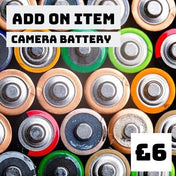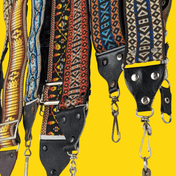You're just starting to get the hang of film, but your photos still look like they were taken with a disposable?
Consider looking into getting your hands on an SLR or a Point and Shoot with settings you can change. Then check out this blog for some top tips for finding the right settings for your subject.

Film Photography takes patience and love for warmth and grain. Playing with film cameras allows you to explore the key elements of photography and why it makes for such an enjoyable hobby, occupation, or interest.
Keywords you need to know
Underexposed - Underexposed means that your photo didn't get enough light. The shadows appear super dark and the colours are often muted and dark, sometimes your photo could be so underexposed that your film turns black!
Overexposed - Overexposed shows up in photos that have been shown too much light, these are opposite to underexposed photos. The highlights are often super blown out and white most of your colours will look faded because the lighting was too bright. Sometimes you may get your film back and it looks blank with no detail because it was overexposed.
The Exposure Triangle
The exposure triangle is a diagram that shows the importance of the 3 main settings in photography. Aperture, ISO, and Shutter Speed.
- Aperture is how much light you want to enter the camera
- ISO in film photography is set by the film speed and can't be changed.
- Shutter speed determines how fast light enters the camera.
These are all linked together because they affect one another. ISO for instance, if your ISO is too small it won't cope with dull, cloudy days as it is not as sensitive to light. Your shutter speed determines how fast light enters the camera, if the shutter speed is too slow the photo will be overexposed. This is because the hole in the lens is open for a longer amount of time, therefore letting more light in. F-stops are determined through your camera's lens. The bigger the number the smaller the hole.

- F-stop - controls the amount of light entering the camera. As a result of this, it changes the depth of field.
- Depth of Field - How blurred the background of your image is. For a portrait, you will have a shallow depth of field to make the person pop out of the background.
- Grain - dictated by your ISO, grain is how much noise and texture the image has. The more the ISO the more amount of grain.
Once you have the basic knowledge, let's apply it
Film Camera Store sells film at a range of ISO film speeds. Our lowest is 100 ISO. The best beginner ISO to choose is anywhere from 200-400 ISO this is because it copes extremely well with cloudy days as well as sunny days.
After choosing a film speed, you can pop over to our blog about how to load film in an SLR. If you are not using an SLR, there will be some information about settings for Point and Shoot cameras
Exposure calculator... so easy!
The exposure calculator is not only a fun DIY project but also super easy for a quick way to sort out camera settings. Here is a super easy PDF you can download to make an exposure calculator. We used Andrew Lawn's (http://www.squit.co.uk/photo/exposurecalc.html) version of the exposure calculator. This tool converts the EV readings to an easy combination of the Exposure triangle. Just print it out and follow the instructions.

This is essentially a cool little gadget to keep in your camera bag or back pocket while you're out and about. It's cheaper than buying a light meter and more reliable than some phone apps.
- Light meter - Measures the light directly hitting your subject, whether that be a person or a plant etc.
Light meters are not essential to getting the best photograph but they certainly help you to achieve a photograph that is not under or overexposed. Once you get used to the settings you can easily ditch the meter and work off your own instincts. Photography is best when you experiment and have fun!
Manual Focus

A lot of our SLRs are manual focus. With digital cameras and our phones, we are so used to automatic focusing. Once you learn to trust your brain that your subject is in focus you won't take any blurry out-of-focus photos anymore. A fun fact why shooting on a disposable camera is more difficult is, It has a fixed focus! This means that you have to guess if you're the right distance away or not.
A hack for grasping manual focus in an SLR is the small ring you often see in the middle of your viewfinder, this is called the focusing screen. This is so helpful for focusing on your subject. Line up the two parts of the ring by rotating the focus ring on your lens and you are all good!

Go Slow
It's difficult to remember that film is from a different era as we move away from digital. But please take a moment to think about how precious and precise film is. It's made for people who want to explore photography, who want to have fun with the real core of photography, and who take the opportunity to experiment at any point.
An extremely important part of taking the best photo on film is to slow down and take your time. The settings are important, without them you have a big margin for error. There are only so many shots in a roll of film. 36 being your average roll of the film sometimes as little as 12 shots. A roll of film is not cheap so you need to set up your shot with a purpose. Of course, you can snap away with film too but this won't help you achieve the best photograph.

We do recommend if you are first starting out, use 35mm film. This size film is super versatile in that it is the most common for point-and-shoot cameras.Shoot in 35mm
Both the film and cameras are often cheaper with 35mm compared to medium format, and at 36 images per roll of film, you get more breathing room to experiment and shoot!
Shooting medium format rolls of film only gives you 12-16 pictures, depending on what camera you use, and that’s less than half of what you’ll get with shooting 35mm!!
Send your photos to a professional lab
It is so useful when shooting film to have a film development lab that you consistently go to. It's all well and groovy going to your local boots or Max Spielman or snappy snaps and getting your roll developed but that's like going to McDonald's and expecting the best burger you've ever had. They're cheap and convenient, but overall disappointing.
Take it from us, the importance of a film lab will get you those photos, the knowledge of film that is not just born yesterday but has taken generations, time, or dedication to understanding. They will look after you and help you find those crisp, toned images you want. We recommend a little research into your local brand or even looking for a development lab that can do online development.
















